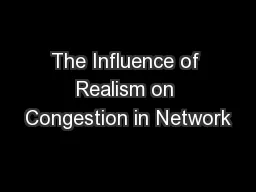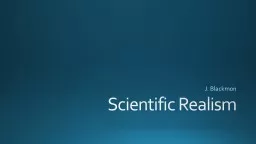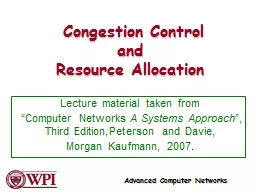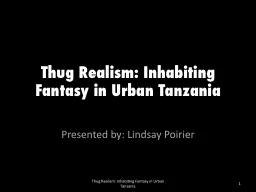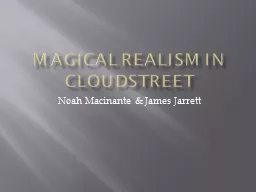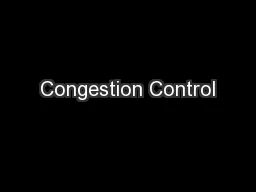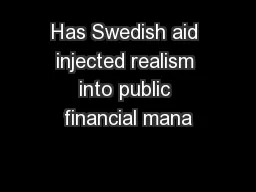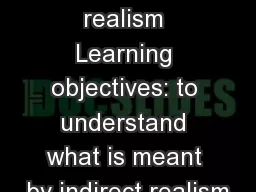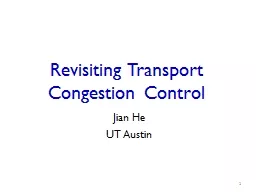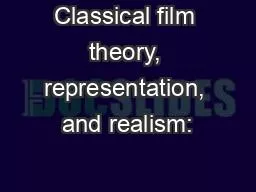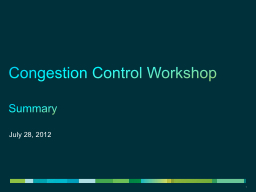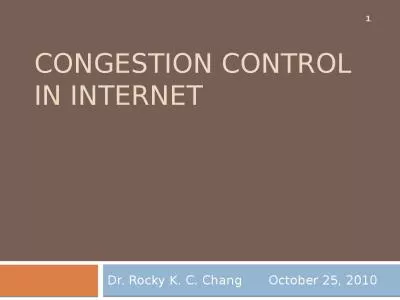PPT-The Influence of Realism on Congestion in Network
Author : myesha-ticknor | Published Date : 2017-05-28
Simulations K Mills joint work with C Dabrowski NIST December 1 2015 For more details see NIST Technical Note 1901 http wwwnistgovitlantduploadTechNote1901draft1pdf
Presentation Embed Code
Download Presentation
Download Presentation The PPT/PDF document "The Influence of Realism on Congestion i..." is the property of its rightful owner. Permission is granted to download and print the materials on this website for personal, non-commercial use only, and to display it on your personal computer provided you do not modify the materials and that you retain all copyright notices contained in the materials. By downloading content from our website, you accept the terms of this agreement.
The Influence of Realism on Congestion in Network: Transcript
Download Rules Of Document
"The Influence of Realism on Congestion in Network"The content belongs to its owner. You may download and print it for personal use, without modification, and keep all copyright notices. By downloading, you agree to these terms.
Related Documents

